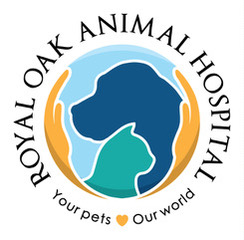Library
-
Bouquets and plants make wonderful gifts and decorations for our homes. However, many plant species can be hazardous to your cat's health. Be aware of the plants and flowers you are bringing into your home to prevent accidental poisonings. This handout outlines several common toxic plants.
-
Plaque forms on teeth shortly after eating and within 24 hours begins to harden, eventually turning into tartar. Tartar serves as a place for bacteria to grow, leading to gingivitis. As gingivitis worsens, periodontal disease develops, which includes inflammation, pain, and tooth loss. Prevention of plaque and tartar build-up is key. Use VOHC-accepted food and/or water additives, wipe or brush your cat's teeth daily, and have your veterinarian perform regular dental cleanings.
-
Plaque forms on teeth shortly after eating and within 24 hours begins to harden, eventually turning into tartar. Tartar serves as a place for bacteria to grow, leading to gingivitis. As gingivitis worsens, periodontal disease develops, which includes inflammation, pain, and tooth loss. Prevention of plaque and tartar build-up is key. Use VOHC-accepted food and/or water additives, wipe or brush your dog's teeth daily, and have your veterinarian perform regular dental cleanings.
-
Plaque prevention gel (brand name Oravet® Plaque Prevention Gel) is applied to a pet’s teeth at home to create an invisible barrier that will help prevent plaque and tartar formation on the exterior parts of the tooth (the crown). It can be used on both dogs and cats.
-
Plasma cell tumors develop as a result of dysregulated production of plasma cells and are relatively uncommon in dogs and cats. Some plasma cell tumors are benign and the most common locations for these tumors are the head, feet, lips, mouth, and ears. The treatment of choice for benign plasma cell tumors is surgical removal, with little to no recurrence if completely excised. Conversely, multiple myeloma is a very malignant cancer that is usually treated with chemotherapy.
-
Platelet-rich plasma or PRP is a form of regenerative medicine where the platelet and protein components of blood are retrieved from a patient and then injected back into the patient at the site of inflammation. PRP contains growth factors that appear to promote tissue regeneration and reduce inflammation. The procedure is not yet widely available and should only be performed by a veterinarian with specialized equipment and special training in this area.
-
Some cats do not seem to know their strength and do not recognize that they are causing pain to their play partners. Accidental bites and scratches can be painful and cause infection, so it is important to find ways to play safely. With training, you may be able to use a verbal cue to redirect your cat if he becomes overly aroused during play.
-
Mouthing, nipping, and biting are used by all puppies during social play with their littermates. Once they leave their littermates, you can easily teach them a new set of games that are appropriate for social play with people. It is important to provide puppies with outlets for appropriate play from the start. Puppies should never be punished for playing with their teeth, as it can cause them to become permanently fearful of people.
-
Pleural effusion is the abnormal accumulation of fluid in the chest cavity. Fluid accumulates in the pleural sac, not the lungs, so the lungs are essentially floating in a chest full of fluid. This fluid occupies space within the chest, so the lungs cannot expand as fully as they should. Treatment and prognosis vary depending on the underlying cause.
-
Pleural effusion is the abnormal accumulation of fluid in the chest cavity. Fluid accumulates in the pleural sac, not the lungs, so the lungs are essentially floating in a chest full of fluid. This fluid occupies space within the chest, so the lungs cannot expand as fully as they should. Treatment and prognosis vary depending on the underlying cause.


